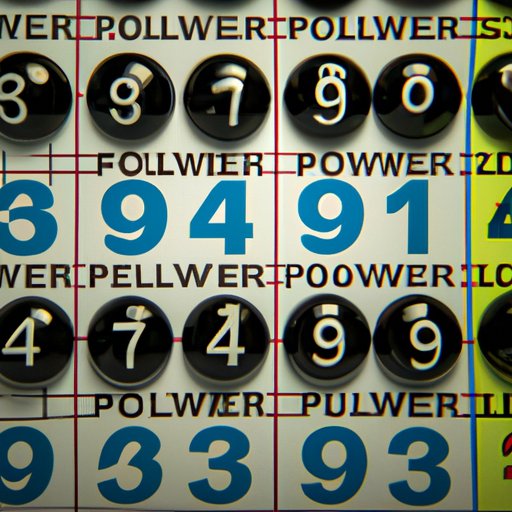Introduction
Powerball is a popular American lottery game that offers players a chance to win big with a small investment. People play Powerball for a variety of reasons, but the most common is the allure of winning a massive jackpot that can change their lives forever. In this article, we’re going to explore the math behind Powerball and the number of combinations that exist in this game.
The Math Behind Powerball: Understanding the Number of Combinations
In mathematics, combinations refer to the number of ways that a set of distinct objects can be chosen without regard to the order in which they are chosen. In Powerball, the concept of combinations is used to determine the odds of winning and to calculate the total number of possible outcomes.
Powerball is a game of chance that uses two drums to randomly draw five white balls from a pool of 69 and one red Powerball from a pool of 26. To win the jackpot, a player must match all five white balls plus the red Powerball. There are also eight other prize tiers, ranging from $4 to $1 million, depending on the number of balls matched.
Exploring the Odds: How Many Combinations Exist in Powerball?
The odds of winning the Powerball jackpot are notoriously low, but have you ever wondered just how many possible combinations there are in this game? Well, the answer is 292,201,338. That means there are 292 million, 201 thousand, and 338 possible combinations that can be drawn in Powerball.
Compared to other lottery games, this number is quite high, as most other lottery games have a much smaller number of total combinations. However, what makes Powerball unique is that it has a relatively small number of total combinations compared to the massive jackpot payouts it offers.
Breaking It Down: How to Calculate the Total Combinations for Powerball
If you’re curious about how this number was calculated, you can break it down using some simple math. First, you need to determine the number of ways that five white balls can be chosen from a pool of 69 without regard to order, which is 69 choose 5 or 11,238,513. Then, you need to determine the number of ways the red Powerball can be chosen from a pool of 26, which is 26 choose 1 or simply 26. To get the total number of possible combinations, you just multiply these two numbers together: 11,238,513 x 26 = 292,201,338.
This may seem like a lot of combinations, but keep in mind that if just one number is different, the combination is considered a losing one. This is why the odds of winning the Powerball jackpot are so low.
The Powerball Lottery: How Likely Are You to Win with So Many Combinations?
The odds of winning the Powerball jackpot are 1 in 292,201,338. While this may seem like an impossibly low chance of winning, it’s important to remember that someone has to win eventually. Additionally, the odds of winning smaller prizes are much higher than the jackpot, and many people win small prizes in Powerball every week.
The number of combinations in Powerball affects your chances of winning because it increases the number of possible outcomes and reduces the probability of any one outcome. However, it’s important to remember that each combination has an equal chance of being drawn, no matter how unlikely it may seem.
The Science of Numbers: Why Understanding Powerball Combinations Matters
Understanding the math behind Powerball combinations is important because it can help players make better choices about how to play the game. By understanding the odds and the number of possible outcomes, players can make informed decisions about how much to invest in the game, which numbers to choose, and how many tickets to buy.
Additionally, understanding the underlying math can be useful for identifying patterns or trends in the game that may improve your odds of winning, such as certain numbers being drawn more frequently or less frequently than others.
Unpacking the Numbers: How to Increase Your Chances of Winning with Powerball Combinations
While there’s no guaranteed way to win at Powerball, there are some strategies you can use to increase your chances of winning, based on an understanding of the underlying math. One strategy is to play a pool with friends or coworkers, which allows you to buy more tickets without increasing your investment. Another strategy is to avoid choosing numbers that are commonly chosen by other players, which can reduce the odds of having to split a jackpot if you win.
However, it’s important to remember that no matter how many tickets you buy or how you choose your numbers, the odds of winning the Powerball jackpot are always going to be low. It’s important to play responsibly and only invest what you can afford to lose.
Conclusion
In conclusion, Powerball is a game that offers players the chance to win big, but with high odds against them. The number of possible combinations in Powerball is 292,201,338, making it one of the most difficult lotteries to win. However, understanding the math behind Powerball combinations can help players make more informed choices about how to play the game, how much to invest, and which numbers to choose.
